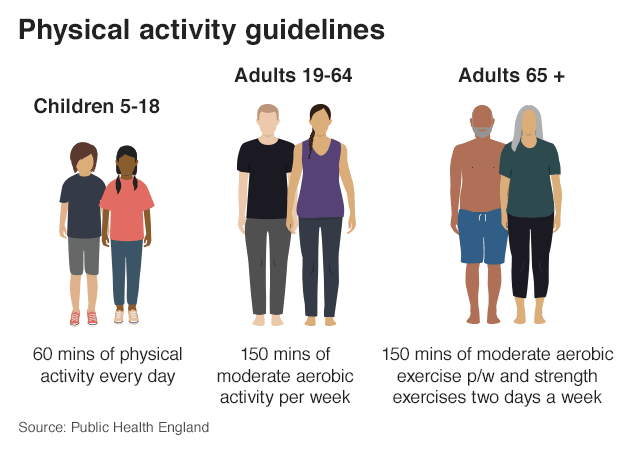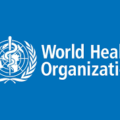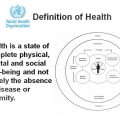The World Health Organization defines physical activity as any bodily movement produced by skeletal muscles that require energy expenditure – including activities undertaken while working, playing, carrying out household chores, traveling, and engaging in recreational pursuits. The term “physical activity” should not be confused with “exercise”, which is a subcategory of physical activity that is planned, structured, repetitive, and aims to improve or maintain one or more components of physical fitness. Beyond exercise, any other physical activity that is done during leisure time, for transport to get to and from places, or as part of a person’s work, has a health benefit. Further, both moderate- and vigorous-intensity physical activity improves health.
How much physical activity is recommended?
WHO recommends:
Children and adolescents aged 5-17years
- Should do at least 60 minutes of moderate to vigorous-intensity physical activity daily.
- Physical activity of amounts greater than 60 minutes daily will provide additional health benefits.
- Should include activities that strengthen muscle and bone, at least 3 times per week.
Adults aged 18–64 years
- Should do at least 150 minutes of moderate-intensity physical activity throughout the week, or do at least 75 minutes of vigorous-intensity physical activity throughout the week, or an equivalent combination of moderate- and vigorous-intensity activity.
- For additional health benefits, adults should increase their moderate-intensity physical activity to 300 minutes per week, or equivalent.
- Muscle-strengthening activities should be done involving major muscle groups on 2 or more days a week.
Adults aged 65 years and above
Should do at least 150 minutes of moderate-intensity physical activity throughout the week, or at least 75 minutes of vigorous-intensity physical activity throughout the week, or an equivalent combination of moderate- and vigorous-intensity activity.
- For additional health benefits, they should increase moderate-intensity physical activity to 300 minutes per week, or equivalent.
- Those with poor mobility should perform physical activity to enhance balance and prevent falls, 3 or more days per week.
- Muscle-strengthening activities should be done involving major muscle groups, 2 or more days a week.
The intensity of different forms of physical activity varies between people. In order to be beneficial for cardio-respiratory health, all activity should be performed in bouts of at least 10 minutes duration.
Benefits of physical activity and risk of insufficient physical activity
Regular physical activity of moderate intensity – such as walking, cycling, or doing sports – has significant benefits for health. At all ages, the benefits of being physically active outweigh potential harm, for example through accidents. Some physical activity is better than doing none. By becoming more active throughout the day in relatively simple ways, people can quite easily achieve the recommended activity levels.
Regular and adequate levels of physical activity:
- improve muscular and cardio-respiratory fitness;
- improve bone and functional health;
- reduce the risk of hypertension, coronary heart disease, stroke, diabetes, various types of cancer (including breast cancer and colon cancer), and depression;
- reduce the risk of falls as well as hip or vertebral fractures; and are fundamental to energy balance and weight control.
Insufficient physical activity is one of the leading risk factors for global mortality and is on the rise in many countries, adding to the burden of NCDs and affecting general health worldwide. People who are insufficiently active have a 20% to 30% increased risk of death compared to people who are sufficiently active.
Levels of insufficient physical activity
Globally, around 23% of adults aged 18 and over were not active enough in 2010 (men 20% and women 27%). In high-income countries, 26% of men and 35% of women were insufficiently physically active, as compared to 12% of men and 24% of women in low-income countries. Low or decreasing physical activity levels often correspond with a high or rising gross national product. The drop in physical activity is partly due to inaction during leisure time and sedentary behavior on the job and at home. Likewise, an increase in the use of “passive” modes of transportation also contributes to insufficient physical activity.
Globally, 81% of adolescents aged 11-17 years were insufficiently physically active in 2010. Adolescent girls were less active than adolescent boys, with 84% vs. 78% not meeting WHO recommendations.
Several environmental factors which are linked to urbanization can discourage people from becoming more active, such as:
- fear of violence and crime in outdoor areas
- high-density traffic
- low air quality, pollution
- lack of parks, sidewalks, and sports/recreation facilities.
How to increase physical activity
Countries and communities must take action to provide individuals with more opportunities to be active, in order to increase physical activity. Policies to increase physical activity aim to ensure that:
- in cooperation with relevant sectors physical activity is promoted through activities of daily living;
- walking, cycling, and other forms of active transportation are accessible and safe for all;
- labor and workplace policies encourage physical activity;
- schools have safe spaces and facilities for students to spend their free time actively;
- quality physical education supports children to develop behavior patterns that will keep them physically active throughout their lives; and
- sports and recreation facilities provide opportunities for everyone to do sports.
Policies and plans to address physical inactivity have been developed in about 80% of WHO Member States, though these were operational in only 56% of the countries in 2013. National and local authorities are also adopting policies in a range of sectors to promote and facilitate physical activity.
Benefits of Physical Activity in Schools
School attendance: Since regular physical activity contributes to overall health, active students are less likely to miss school due to an illness. As we’ll see, some students also miss school for mental health issues, which physical activity can hedge against, as well. Missing school, even as early as first grade, can indicate an increased likelihood that students will drop out of school eventually. Attendance is critical so students stay on track with their classes and receive a complete education.
Mental health: Mental health is an important aspect of children’s development and, though it is a separate issue deserving of its own attention, tends to go hand in hand with physical health. Regular physical exercise decreases the likelihood that children will deal with depression or anxiety. Mental health issues can directly impact students’ academic performance. According to Children’s Mental Health Ontario, a third of Ontario parents have said their child has missed school at some point due to anxiety.
Memory and concentration: Research has demonstrated that physically active children have greater ganglia and hippocampus capacities — parts of the brain associated with memory and cognition — compared to children who are more sedentary. Being able to focus better in the classroom and retain more of the information taught can help children make the most of their education. Improved memory and concentration can also help students in other areas of their lives.
Academic achievement: In addition to looking at individual factors, we can also see a direct link between physical fitness and higher grades. Because of the many cognitive benefits students gain when they’re physically active, higher academic performance is a natural by-product. It’s also true that physical activity can lead to higher grades in the immediate future. A study found that children who were active 20 minutes before a test tended to earn higher scores.
Classroom behavior: Physical activity during the school day can also help students behave better in the classroom. Especially for younger children, sitting still, listening, and following instructions can be a real challenge. When students feel fidgety or distracted, it can be harder for them to behave. Physical activity helps students satisfy their need to move and play so they’re better prepared to focus and listen when they’re in the classroom. Some research even suggests keeping kids active can help prevent bullying.






